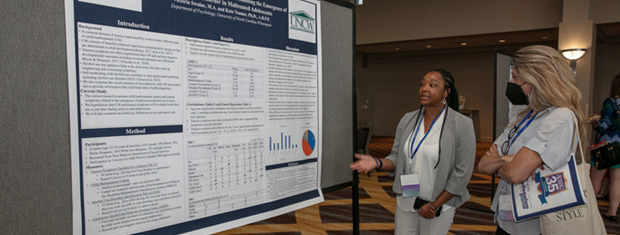




The APSAC Advisor is a peer reviewed quarterly news journal for professionals in the field of child abuse and neglect.
The APSAC Advisor provides succinct, data-based, practice-oriented articles that keep interdisciplinary professionals
informed of the latest developments in policy and practice the field of child maltreatment. It is designed to highlight
best practices in the field and publish original articles and current information about child maltreatment for professionals
from a variety of backgrounds including medicine, law, law enforcement, social work, child protective services, psychology,
public health and prevention in the U.S.
 If you wish to learn more about submitting an article to the Advisor, please click here.
If you wish to learn more about submitting an article to the Advisor, please click here.
This library contains Advisor issues dating back to the first issue in 1988. The most recent issue appears at the top.
Scroll down to select past issues by year and issue number. Once a publication appears in the box, you
can use the Enlarge button to open the document in a new window or tab (depending on how your browser is set up).
This will allow you to view the document with larger print.
To print a document, first use the Enlarge button to open the document in a new window or tab. Then use your browser's Print command.
To return here from a new tab, close the tab. To return from a new window, click your browser's Back button.
In the listing below, click on a year and issue number to see the articles in that publication.
1990 Number 2
Developmental Considerations for Forensic Interviewing
An interview can be the first step to recovery for a victim of abuse. Unfortunately, however, the interview sometimes becomes an intrusive experience in which powerful adults try to pry words from frightened children. Reliable and effective interviewing of suspected victims of child abuse requires knowledge of both child development and the forensic context Equally important, to enhance trust and lessen anxiety an interviewer must convey empathy.
Types of Questions for Children Alleged to Have Been Sexually Abused
In the last five years, doubt about accusations of sexual abuse has resurged. One of the arguments skeptics have put forth is that evaluators induce false positives (accounts or affirmations of sexual abuse when none has occurred) by the way they question children (Wakefield and Undelwager, 1988). That is, evaluators hope to find sexual abuse, and children, wishing to gratify the evaluators, provide socially desirable responses, which support an allegation of sexual abuse in cases where victimization has not occurred.
Are Anatomical Dolls too Suggestive?
The use of anatomical dolls in the assessment of sexual victimization of young children has become standard practice in many settings. The use of anatomical dolls in such evaluations, however. has become increasingly controversial, culminating in recent court decisions in California severely limiting the admission of evidence from anatomical doll interviews.
Beyond Vocabulary: Asking Understandable Questions
Eliciting accurate information from sexually abused children is one of the most difficult tasks facing investigators, therapists, attorneys, and others who work with these young victims. Interviewers are often puzzled by inconsistencies which crop up in children's accounts of abusive incidents, and are worried that such discrepancies will jeopardize the children's credibility and thus the appropriate resolution of the case.
Strategies for Coping With Avoidant Children
Conducting forensic interviews with sexually abused children can be both rewarding and challenging. Often, despite the best efforts of the interviewer to reassure and comfort the chlld, a history is difficult to obtain.
APSAC Advisor 3(2) - Full Issue